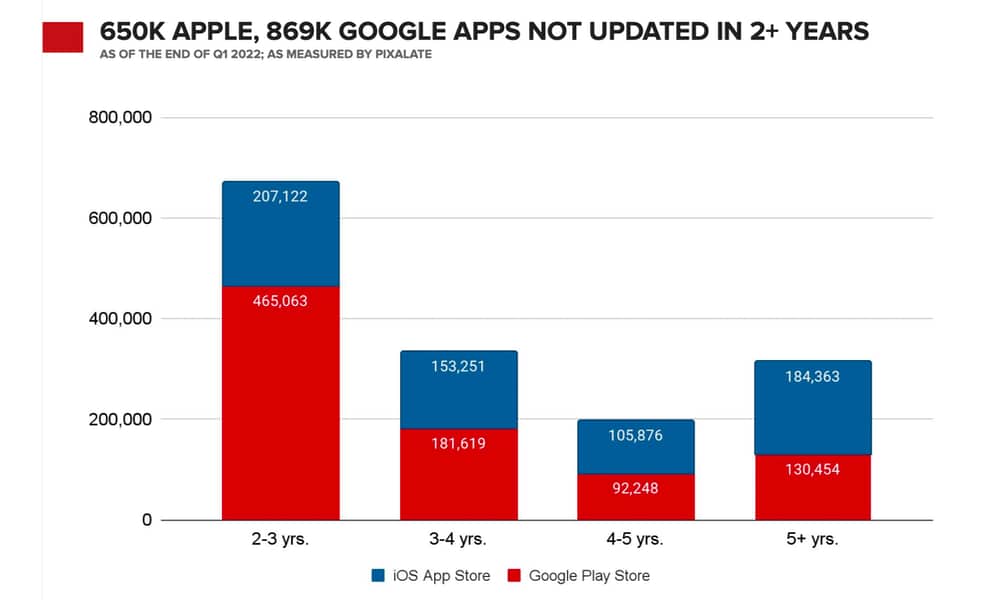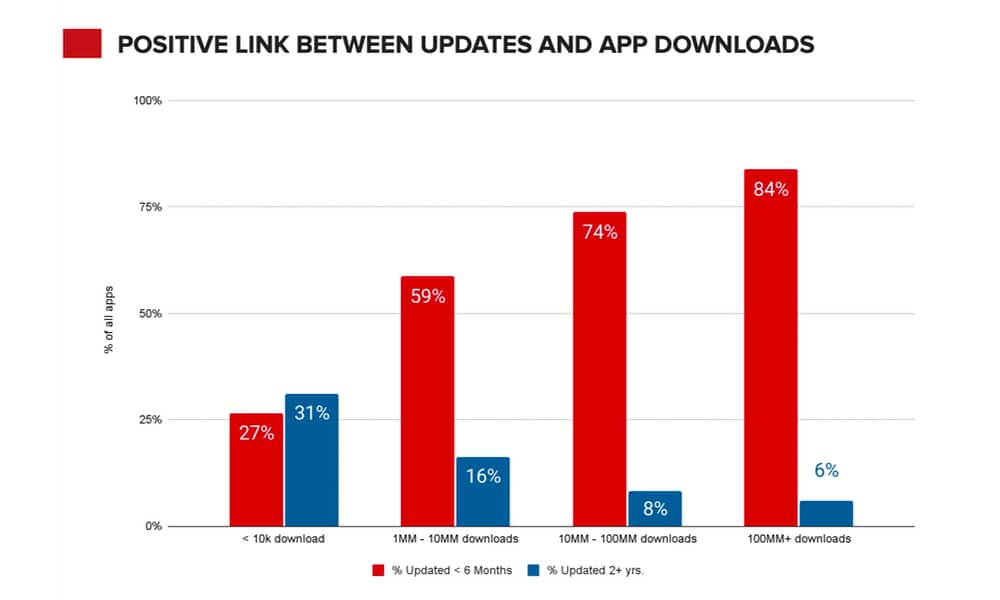What Is ‘Abandonware?’ | App Stores Are Hosting 1.5 Million+ Abandoned Apps (What This Means)
 Credit: Lenscap Photography / Shutterstock
Credit: Lenscap Photography / Shutterstock
Toggle Dark Mode
Apple recently outlined its policy for culling ‘abandoned’ apps from the App Store. A new research paper is giving us some insight into just how big of a problem this is.
While Apple has been routinely flagging and removing ‘abandonware’ from the App Store for years, for some reason, its latest purge garnered an unusual level of attention when several indie developers claimed their apps were being unfairly treated.
However, a new report by market research firm Pixalate reveals that this is a much bigger problem than most of us likely suspected.
According to its Q1 2022 Abandoned Mobile Apps Report, there are over 1.5 million abandoned apps on Apple’s App Store and Google’s Play Store.
Note that Pixalate’s threshold is slightly more stringent than Apple’s. In its report, the analytics firm defines an abandoned app as one that hasn’t been updated in at least two years.
Pixalate uses the date in which the app was last updated to determine the degree of apparent abandonment. For high-level data points, we consider an app to have a heightened risk of “abandonment” if it has not been updated in at least two years (as of the end of Q1 2022).Pixalate, Abandoned Mobile Apps Report (Q1 2022)
Apple draws this line at three years while also adding that an app has to fail to meet a “minimal download threshold” before it’s considered abandoned for the purposes of the App Store.
Pixalate’s report goes into considerably more detail, outlining “different levels of apparent abandonment in six-month increments.” This ranges up to what it calls “super-abandoned” apps — those that remain on their respective app stores despite not receiving any updates in more than five years.
- 650,000 apps on the App Store have not been updated in at least two years, compared to 869,000 on the Play Store.
- 184,000 apps on the App Store haven’t received any updates in over five years. The Play Store does a little better here, with only 130,000 apps that reach that threshold.
- 33 percent of the apps on the App Store and Google Play have not been updated within the past two years.
- At the other end of the scale, 28 percent of mobile apps have been updated in the past six months.
The report also draws a correlation between recent updates and app downloads, noting that 84 percent of the most popular apps — those with over 100 million downloads — were updated in the last six months.
However, abandoned apps weren’t shut out entirely. Apps without an update in more than two years still accounted for six percent of those receiving over 100 million downloads while accounting for slightly larger percentages in the lower categories.
Based on Apple’s stated policies for culling apps, this would explain why many seemingly abandoned apps like Pocket God remain on the App Store. Apple won’t remove a popular app regardless of how long it’s been since its last update — assuming that it still works, of course.
Pixalate also broke down the frequency of app updates by categories, finding that reference, games, and education apps were the most commonly abandoned, while finance, health, and shopping were the most frequently updated.
For example, 40 percent of the games on the App Store haven’t been updated in over two years, while only around 22 percent have been updated in the last six months. The reverse is true for finance apps, 44 percent of which have received recent updates, versus only 20 percent that haven’t been touched in more than two years.
On average, 38 percent of the apps in references, games, and health have not been updated in at least two years, while 36 percent of the apps in finance, health, and shopping have received updates in the last six months.
However, regardless of age, Apple will still pull an app from the App Store if it’s no longer functional on relatively modern versions of iOS. Even in that case, users who have previously downloaded an app will still be able to use it on their devices. It will typically remain in the user’s download history unless the developer pulls it from there.









